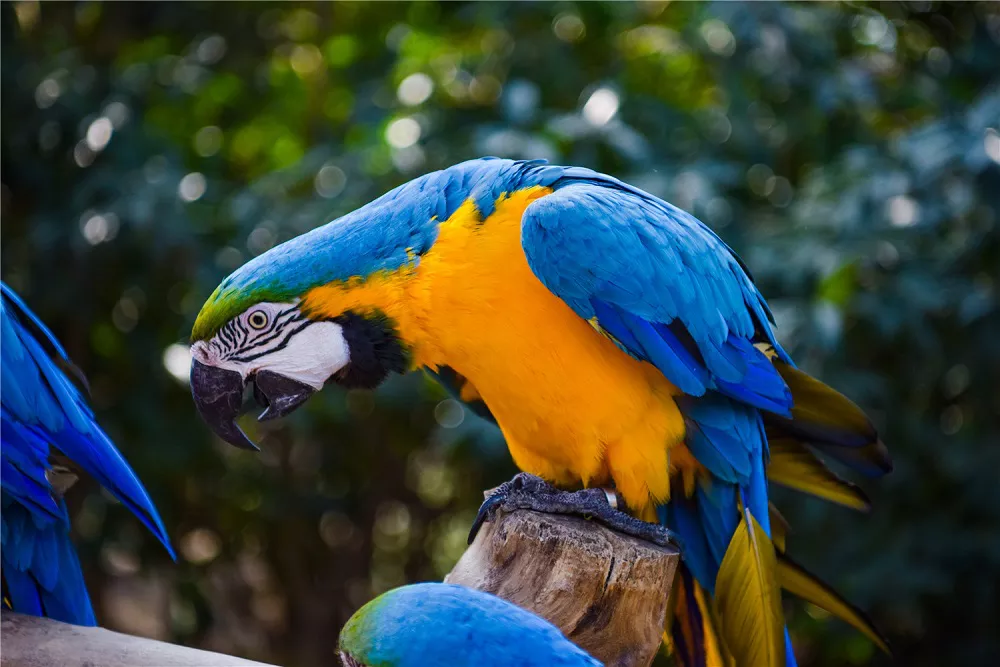Parrots are intelligent and social creatures that form deep bonds with their human companions. However, at times, parrots may exhibit biting behavior, which can be distressing and challenging for both the bird and its caretaker. Understanding the reasons behind parrot biting and employing effective training techniques can help prevent biting incidents and foster a harmonious relationship between parrot and owner. In this article, we will explore gentle and positive methods for training parrots not to bite, promoting trust, and nurturing a respectful bond.
1. Identify the Underlying Causes
Parrot biting can occur for various reasons, including fear, territoriality, hormonal changes, stress, or lack of proper socialization. It is crucial to observe and understand the triggers for biting in your parrot to address the root cause effectively.
2. Establish Trust and Socialization
Building a foundation of trust is essential when training a parrot not to bite. Spend quality time bonding with your parrot through gentle interactions, positive reinforcement, and consistent daily routines. Gradually introduce your parrot to new experiences, people, and environments to ensure proper socialization, minimizing fear and anxiety.
3. Recognize Body Language
Parrots communicate their emotions and intentions through body language. Learn to observe and interpret your parrot’s signals, such as raised feathers, dilated pupils, or beak positioning. Understanding their body language will enable you to anticipate and diffuse potential biting situations.
4. Positive Reinforcement Training
Positive reinforcement is a key component of training parrots. Reward desirable behavior, such as stepping up onto your hand or interacting gently, with praise, treats, or preferred toys. Create a positive association between your presence and pleasant experiences, reinforcing the idea that good behavior leads to positive outcomes.
5. Avoid Punishment or Negative Reinforcement
Punishment or negative reinforcement can escalate fear and stress, potentially exacerbating biting behavior. Instead, focus on redirecting and reinforcing positive behavior. If your parrot displays signs of aggression or prepares to bite, calmly remove yourself from the situation without providing attention or reinforcement.
6. Gradual Desensitization
If your parrot displays fear or aggression towards specific stimuli or situations, employ gradual desensitization techniques. Introduce the trigger at a distance and gradually decrease the distance over time, rewarding calm behavior throughout the process. This method helps your parrot associate the previously fear-inducing stimulus with positive experiences.
7. Be Mindful of Body Handling
Parrots may exhibit biting behavior when they feel their personal space or boundaries are being violated. Practice gentle and respectful body handling, allowing your parrot to become comfortable with being touched and held. Gradually introduce body handling exercises, such as touching wings or feet, rewarding your parrot’s tolerance and compliance.
8. Seek Professional Assistance
If you encounter difficulties in training your parrot not to bite, consider seeking advice from an avian behaviorist or an experienced parrot trainer. These professionals can provide specialized guidance tailored to your parrot’s specific needs and assist you in overcoming behavioral challenges.
Conclusion
Training a parrot not to bite requires patience, consistency, and understanding. By identifying the underlying causes, establishing trust, and employing positive reinforcement techniques, you can effectively address and prevent biting behavior in your parrot. Remember to be mindful of their body language, practice gradual desensitization, and respect their personal boundaries. With time and dedication, you can cultivate a strong and mutually rewarding bond with your parrot based on trust, respect, and gentle guidance.


 Facebook
Facebook  Instagram
Instagram  Youtube
Youtube 